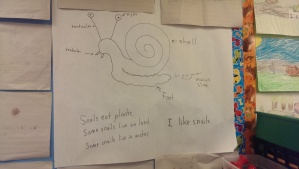Teacher-candidates inform, involve, and collaborate with families/neighborhoods, and communities in each student’s educational process, including using information about student cultural identity, achievement and performance.
In order to support the whole child teacher-candidates must be able to communicate and work alongside families and the community in a respectful and professional manner. The learning process for children requires a team of individuals who are dedicated to the wellbeing and education of the child. Those individuals are the parents and the teachers who above all should work as a team for the child but also members in the community who come to help with the learning and development of the students.
This week my class went on a field trip to the Seattle Aquarium as we have just finished our unit on animals and are about to move into our science unit on the ocean. As evidence of my growing competency in this area I have provided pictures of my students experiencing Seattle and the Seattle Aquarium.
These pieces of evidence show my competency in this area because in the planning for and attending this event there were many times that communication with parents and members of the Seattle Aquarium staff was extremely important. There were four kindergarten classes that went on the field trip each with 14-18 students and almost 20 parents. Communication and collaboration was so important because we wanted the students to not only have a great time and learn a lot but they also were expected to behave the same way they would at school if not better. In the days before the field trip there were countless emails, phone calls and notes exchanged between parents and the teachers in order to coordinate for the grand adventure.
I learned that the more chaperones that you can have the better. There were a few parents who had their hands full, while our kids behaved very well they are still five years old and taking four children in a group is difficult any ways. I want to make sure that parents continue to volunteer at the school so making the experience equally pleasant for them is important.
This impacted students learning because when parents and teachers can communicate and collaborate effectively the students will benefit. All of my students who could go got to go. They all learned a lot about sea creatures and because they were respectful and polite to staff they got to learn even more about them. This field trip was so good for my students who some have never even been to Seattle before and it could have not happened without the parent volunteers
The next time that I go on a field trip of this size I would like to make sure that I have enough chaperones so that I do not have to take my own group of students. This way I can take the time to focus on the needs of the individual groups and can be useful to all of the parents if they need me.







